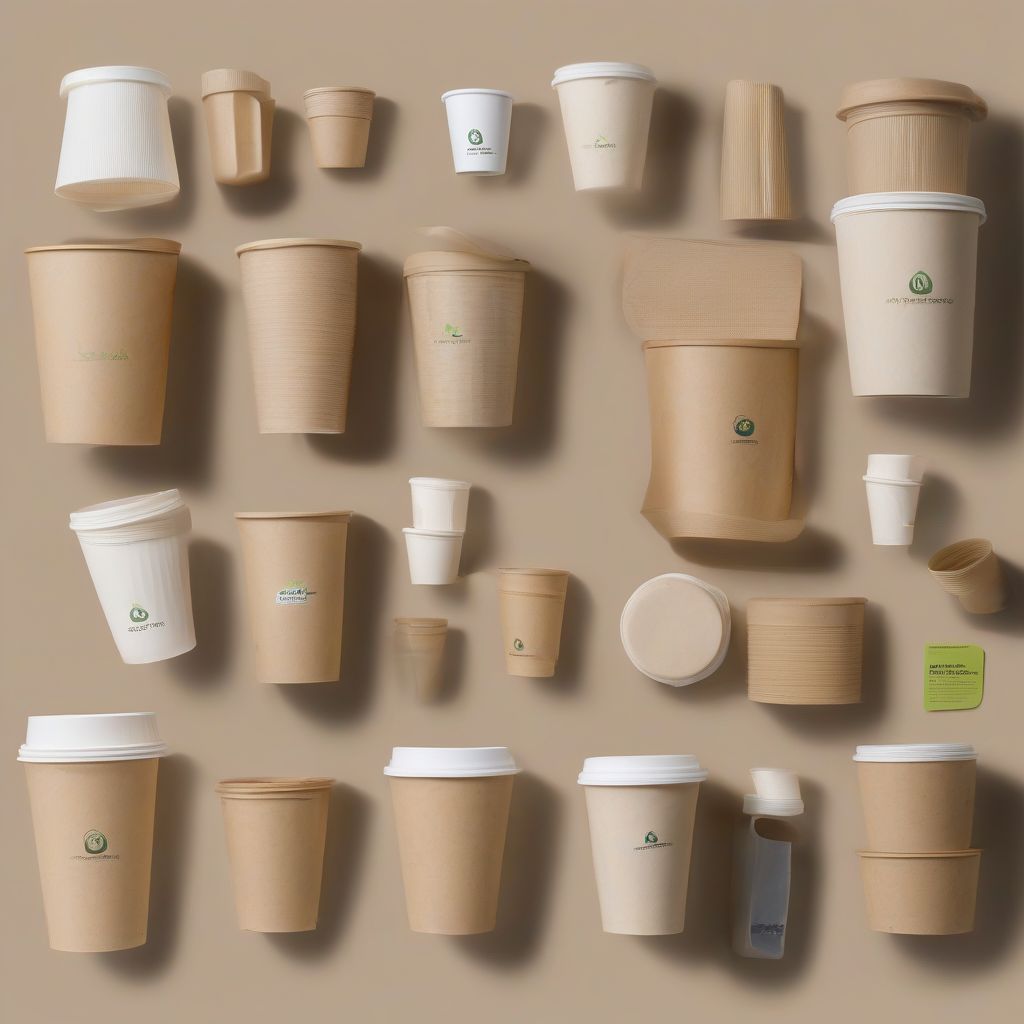Imagine a world where plastic pollution is a distant memory, where our oceans thrive, and landfills shrink. This dream is becoming increasingly achievable thanks to the rise of biodegradable products. But how exactly are these innovative materials making a difference in the fight against plastic waste?
Understanding the Problem: The Persistence of Plastic
Plastic’s durability, once its greatest strength, is now its biggest flaw. Conventional plastics, derived from fossil fuels, can take hundreds, even thousands, of years to decompose. This persistence leads to overflowing landfills, polluted waterways, and harm to wildlife. The sheer volume of plastic waste we generate is staggering, making the search for sustainable alternatives more urgent than ever.
Biodegradable Products: A Sustainable Solution
Biodegradable products offer a beacon of hope. Unlike traditional plastics, they are designed to break down naturally into harmless substances like carbon dioxide, water, and biomass, under the right conditions. This decomposition process, facilitated by microorganisms like bacteria and fungi, significantly reduces the long-term environmental impact.
Types of Biodegradable Products
Biodegradable products encompass a wide range of materials and applications:
- PLA (Polylactic Acid): Derived from renewable resources like cornstarch or sugarcane, PLA is commonly used in food packaging, disposable tableware, and 3D printing filaments.
- PHA (Polyhydroxyalkanoates): These biopolyesters are produced by microorganisms and offer excellent biodegradability in various environments, including marine environments.
- Biodegradable Plastics from Food Waste: Innovative technologies are now converting food waste into biodegradable plastics, offering a circular solution to two environmental challenges.
- Mushroom Packaging: Mycelium, the root structure of mushrooms, can be grown into various shapes and densities, providing a sustainable alternative for packaging materials.
 Biodegradable Products Reducing Plastic Waste
Biodegradable Products Reducing Plastic Waste
How Biodegradation Works
The biodegradation process depends on several factors, including the material’s composition, the environment (temperature, humidity, oxygen levels), and the presence of microorganisms. In composting facilities or anaerobic digesters, these conditions are optimized to accelerate decomposition.
The Impact of Biodegradable Products on Plastic Waste Reduction
The adoption of biodegradable products is already contributing to plastic waste reduction in several ways:
- Reduced Landfill Burden: By decomposing naturally, biodegradable products divert waste from landfills, extending their lifespan and reducing the need for new landfill space.
- Lower Greenhouse Gas Emissions: Some biodegradable plastics, like PLA, have a lower carbon footprint than conventional plastics, reducing the contribution to climate change.
- Protection of Marine Life: Biodegradable alternatives, especially those that decompose in marine environments, help protect marine ecosystems from the harmful effects of plastic pollution.
- Promoting a Circular Economy: Biodegradable products, particularly those made from food waste, support a circular economy by turning waste into valuable resources.
Addressing Challenges and Misconceptions
While biodegradable products offer significant advantages, it’s crucial to address some common misconceptions:
- “Biodegradable means it will disappear anywhere”: Biodegradable products require specific conditions to decompose effectively. Littering biodegradable items doesn’t solve the problem, as they may not break down in a typical outdoor environment.
- “All bioplastics are created equal”: Different bioplastics have varying biodegradability properties. Some require industrial composting facilities, while others can break down in home composting systems. Consumers need to understand these differences and dispose of them accordingly.
- “Bioplastics are more expensive”: While the initial cost of bioplastics can be higher than conventional plastics, the long-term environmental and social benefits outweigh the price difference. As production scales up and technology advances, the cost of bioplastics is expected to decrease.
The Future of Biodegradable Products
The future of biodegradable products is bright. Ongoing research and development are leading to new materials with improved biodegradability, enhanced performance characteristics, and lower production costs. Consumer demand for eco-friendly alternatives is also driving innovation and market growth. Governments are playing a crucial role by implementing policies that support the development and adoption of biodegradable products, such as bans on single-use plastics and incentives for using sustainable alternatives.
Conclusion
Biodegradable products are a crucial tool in the fight against plastic waste. By offering a sustainable alternative to conventional plastics, they are helping reduce landfill burden, protect marine life, and promote a circular economy. While challenges and misconceptions remain, continued innovation and consumer awareness are paving the way for a future where biodegradable products play a central role in creating a healthier planet. We encourage you to share your thoughts and experiences with biodegradable products in the comments below and join the conversation on reducing plastic waste. Together, we can make a difference.



